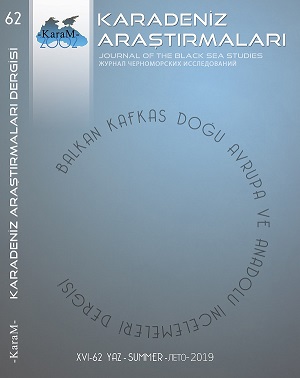Tarihî Tıp Metinlerini Anlama Sorunu ve Çözüm Önerileri
The Problem of Understanding of Historical Medical Text and Proposals of the Solutions
Author(s): Ayşe Nur Sir DündarSubject(s): Customs / Folklore, Modern Age, Lexis, Cultural Anthropology / Ethnology, Health and medicine and law, 15th Century, The Ottoman Empire
Published by: Karadeniz Araştırmaları Merkezi
Keywords: Traditional Turkish Medicine; ancient medical texts; Ottoman Turkish; medical terminology; herbal treatment practices;
Summary/Abstract: Traditional and complementary medicine practices are increasing worldwide. The reason behind this increase is the expectation of achieving and effectively improving the health standards required for the diagnosis and treatment of physical and mental diseases. At the base of this expectation is the belief that natural products and practices are better, more effective and safer. This belief, which is common among the people, is a powerful resource that feeds expectations. However, such medical practices, which have gained importance in the life of a significant number of people, have been denied, left unchecked and uncontrolled for a long time. They have been absolutely abused in the hands of persons who are not in good standing and who do not have any legislative infrastructure. These practices, which are applied in places without any standardization, are threatening rather than protecting human health. Both the individual and the health of the community have been exposed to risk. However, traditional and complementary medicine practices includes various, culturally recognized, and rooted treatment methods which is ranging from voluminous cupping (hacamat), herbal treatment (phytotherapy) leech therapy (hirudotherapy). Each of these practices is a product of medical accumulations dating back centuries. For this reason, these applications as a product of traditional medicine; It should be done by experienced, knowledgeable, cumulative and licensed experts. Modern medical education is not enough for these people to have authorization. The accumulations based on old medicine understanding must also be transferred to them. The source of these accumulations are the old Turkish medical texts which were origin or translated from the works of important physicians. These sources of information, considered as a national treasure for the history of Turkish language, are the only documents bearing the rich vocabulary of the medical literature of the time. In order to benefit from these documents, it is necessary to know the Turkish alphabet composed Arabic letters and to read and understand the texts written in this alphabet. The way to understand is to dominate the language of the text. Language domination is achieved by learning Ottoman Turkish, where Arabic and Persian elements are used more intensively. The aim of this study is to examine and understand the old medical texts which are very important in traditional and complementary medicine applications and to understand the importance of knowing Ottoman Turkish in order to understand the medical terminology in these texts. In order to achieve this aim, first of all the Turkish medical works were Hekim Bereket's Tuhfe-i Mübârizî, İshâk bin Murad's Edviye-i Müfrede, Cerrâh Mesûd’s Hulâsa-i Tıbb, İbn-i Şerif's Yadigâr, Hacı Paşa's Müntehâb-ı Şifâ, Mehmed bin Ali’s Terceme-i Cedide fi’l-Havâssi’l-Müfrede, Gevrekzâde Hâfız Hasan Efendi’s Netîcetü’l-Fikriyye fî Tedbîri Velâdeti’l-Bikriyye were examined, then given exampales from the statements consisted of occupational culture in their herbal treatment applications, in treatment methods in fractures, and in treatment of physical disorders. In addition, the examples of the Turkish terms which were important for Turkish medical terminology, and were name of plants, diseases, organs were presented by identifying.
Journal: Karadeniz Araştırmaları
- Issue Year: 2019
- Issue No: 62
- Page Range: 260-273
- Page Count: 14
- Language: Turkish

